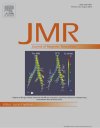
Lung Imaging Research Gets Its Second Wind
Computational fluid dynamics (CFD) provides a quantitative basis for predicting the pulmonary airflow patterns that carry inhaled materials inside the body. This is not only potentially useful for establishing safer exposure limits to airborne pollutants but also for improving targeted drug delivery in patients with pulmonary disease. One prerequisite is that simulated predictions be thoroughly tested in a living organism, where respiratory airflows depend not only on airway shape and curvature but also on local lung mechanics and associated differences between health and disease.

Mass Spec Makes the Clinical Grade
Combining two well-established analytic techniques and adding a twist identifies proteins from blood with as much accuracy and sensitivity as the antibody-based tests used clinically, Pacific Northwest National Laboratory researchers report this week in Proceedings of the National Academy of Sciences Early Edition online. The technique should be able to speed up development of diagnostic tests and treatments based on proteins specific to certain diseases.

New Protein Discovered Gives Insights to Iron's Fate Underground
It's almost an evil twin story; a protein that steals electrons from iron in one microbe looks a lot like one that adds electrons in another microbe, according to scientists at Pacific Northwest National Laboratory and the University of East Anglia. Their survey of the genes of common groundwater bacterium Sideroxydans lithotrophicus ES-1, which removes electrons from iron, revealed that it contained genes in common with Shewanella oneidensis MR-1, which adds electrons to iron.

Turning Down the Heat for Carbon
When it comes to reducing the impact of the energy we use to cool our homes and power our computers, one option is to remove gaseous carbon dioxide (CO2), pump it into underground reservoirs, and have it become part of the mineral formations. If the CO2 doesn't react, it remains in a state that could be released by drilling or earthquakes, defeating the purpose of sequestering the carbon away from the atmosphere.


